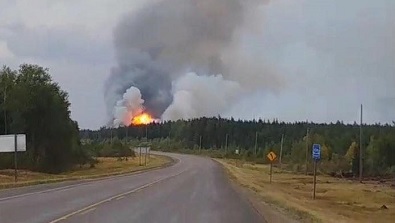A new report makes a number of recommendations on how the province could improve on its role in emergency evacuations from northern Indigenous communities.
The study is the work of a University of Saskatchewan professor James Waldram, master’s student Megan Poole and Peter Ballantyne Cree Nation elder John Merasty.
“Like Residential School All Over Again” examines how people in the northern community of Pelican Narrows were affected by an evacuation during a 2017 fire.
Waldram said the key finding of the report is that extended families should be kept together during evacuations.
He said people are usually evacuated based on level of health risk.
This means senior community members and those who are immune compromised will be evacuated first and often separated from other family members.
“This is actually very detrimental because extended family is the social building block of northern communities,” Waldram said. “It is where resilience can be embedded. The idea here is to rethink what it means to be ‘at-risk.’ And, to not just take out an individual who maybe has a health problem and a single caregiver, but rather to look at the broader social unit who would be evacuated together.”
The report also recommends building a permanent structure where Indigenous people can be housed during an evacuation.
This structure should be located in a First Nations or northern community, it says.
Waldram said a number of community members told researchers they did not feel comfortable within a city setting where Indigenous culture and social ideologies were not prevalent.
“Sometimes some of the people that are evacuated have never really been in one of the southern cities, so it’s quite a shock, I guess. They’re not comfortable and they don’t want to be in a place like Saskatoon.”
Waldram said the next step will be to taking the report up with government officials and lobbying for real changes.
(PHOTO: 2017 Pelican Narrows fires. File photo.)
